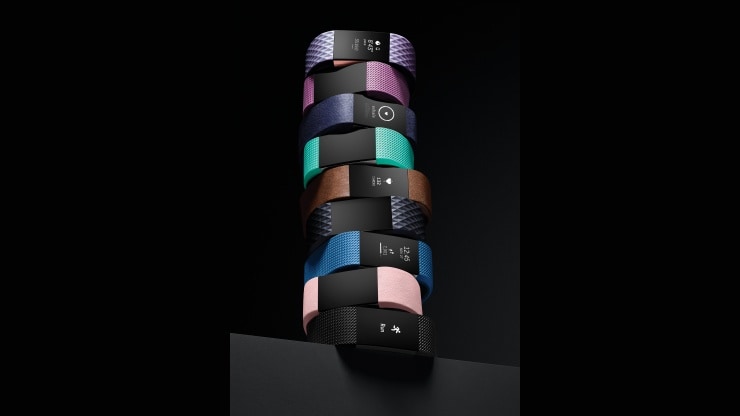Your heart beat is no longer just yours – it’s your doctors to watch, and also for your friendly smartwatch or fitness band to monitor. If you’re considering purchasing one or you just did, you’ve probably realized there is no dearth of them. The past two years have seen manufacturers across the board have these fancy heart-rate sensors implanted into every product brought into existence. With them, come a variety of supposed health benefits and a lot of awareness. It’s why we’ve been buying smartwatches and fitness bands. The heart rate is at the center of it; it’s an interesting subject no doubt, but are the fitness bands telling you everything you need to know? We take a little run through the jargon of heart rate monitors, whether they matter and how accurate they might be. More importantly, should you care? Before we proceed, we must clarify, any and all help you need on your medical health and well-being is best consulted with your doctor, your physician.
Before we proceed, we must clarify, any and all help you need on your medical health and well-being is best consulted with your doctor, your physician.
What is a heart rate?
Your heart beats a certain number of times every minute. It beats faster, and sometimes, slower. It depends on what you’re doing, how old you are, and how physically active you might be. Regardless, most of us using smartwatches and fitness bands talk about heart rates in BPM (beats per minute). Popular culture and modern society tells us what’s a good heart rate to have, but a doctor is the one best guiding you with this. Youngsters have higher heart rates when they’re idle, typically 70 to 100bpm, while those over the age of 18 could have heart rates ranging from as low as 60 to 100bpm. Athletes tend to have lower heart rates because their hearts are fine-tuned from the intense physical regime, so their hearts and bodies need to exert less to pump blood through their systems. Most folk want to reach that sort of efficiency, safely.
What is a target heart rate?
Those taking their fitness seriously, would like to work-out with their heart rate in a specific range. The target heart rate is a range between which you want your heart to be beating at, while you’re exercising, lightly or heavily. Anything more than that can be dangerous, anything lower may not be exercise at all. Various sites offer formulas to calculate this but medical and fitness professionals can guide you better. Wearables let you monitor your current heart rate while you’re walking, jogging, running, cycling or just gymming.
How do fitness bands and smartwatches monitor your heart rate?
 Ever wondered why your smartwatch or fitness band has a flashing green light on it? Smartwatches and fitness bands measure heart rate by scanning blood flow near your wrist, by illuminating it with LEDs. The colour green is chosen, because it is absorbed well by our red blood, so optical sensors can gauge the flow of blood and heart beats more accurately.
Ever wondered why your smartwatch or fitness band has a flashing green light on it? Smartwatches and fitness bands measure heart rate by scanning blood flow near your wrist, by illuminating it with LEDs. The colour green is chosen, because it is absorbed well by our red blood, so optical sensors can gauge the flow of blood and heart beats more accurately.
What is an ECG and EKG? Does my wearable use this technology?
EKG is the very same thing as ECG. The ‘K’ in EKG stands for Elektro-kardiographie, which is German for Electrocardiography (ECG). They aren’t used by most mainstream smartwatches and fitness bands. ECG offers far superior and accurate monitoring of your heart that most wearables just do not. They do this by measuring electrical impulses around your heart, that’s responsible for your heart muscles to contract and expand. ECG also tends to be better at measuring yet another complex term – heart rate variability (HRV), which is the interval between heart beats. This can change from time to time.

The products we wear, use Optical Heart Rate Monitoring (OHRM), a fancy term which works on the basis of a different method and a mouthful of a term called PPG (photoplethysmography). As it suggests, this is done by looking at the blood flow while projecting a light on your skin. PPG does a fair job but it’s not nearly as accurate as ECG is. Sweat, skin-tone, the placement of the sensor on your wrist, movement can all play spoil-sport. The result is inaccurate readings.  Another reason wearables aren’t going to be as accurate is because we’re monitoring the blood flow at the extremities, like our wrist. Blood flow here is way slower than it would be near the heart. PPG could be more accurate if devices were placed near our chest, and early fitness watches bundled chest-straps for this purpose. They were too cumbersome to wear, uncomfortable, annoying and not trendy at all. Most consumers wanted something convenient, like a watch.
Another reason wearables aren’t going to be as accurate is because we’re monitoring the blood flow at the extremities, like our wrist. Blood flow here is way slower than it would be near the heart. PPG could be more accurate if devices were placed near our chest, and early fitness watches bundled chest-straps for this purpose. They were too cumbersome to wear, uncomfortable, annoying and not trendy at all. Most consumers wanted something convenient, like a watch.
ECG sensors in a wearable format are rare to find, and can be quite expensive. If you are hell-bent on owning one, you will need to do some research before your purchase.
How do you monitor your pulse?
 It’s simple – hold your thumb on your left wrist, and you’ll feel a pulse. You don’t need a wearable. Use a clock or timer to measure the number of beats you feel over a period of 10 seconds. Simply multiply by that number by 6 (so we get beats for 60 seconds) and that should give you an idea of your heart rate (bpm). You can compare this with the heart rate your smartwatch or fitness band is telling you. You’ll know if your wearable is lying, and how much.
It’s simple – hold your thumb on your left wrist, and you’ll feel a pulse. You don’t need a wearable. Use a clock or timer to measure the number of beats you feel over a period of 10 seconds. Simply multiply by that number by 6 (so we get beats for 60 seconds) and that should give you an idea of your heart rate (bpm). You can compare this with the heart rate your smartwatch or fitness band is telling you. You’ll know if your wearable is lying, and how much.
So does that mean my fitness tracker and smartwatch aren’t very accurate?
Most likely! They are not as accurate as professional medical equipment are, but they can be pretty close. That’s perfectly fine, as long as you’re not using your smartwatch or fitness band for critical monitoring. Most medical equipment is bulky, expensive and doesn’t come with slick-looking, social media-enabled apps for our phones and tablets. It’s going to be a while before that professional technology is on our hands (or wrists). Most sensors on smartwatches and fitness trackers may record irregular heart rates but only while peaking. Most of the time though, they are fairly accurate and that is better than having no heart-rate monitoring at all.
What should I do with my smartwatch and fitness band?
 Use them! For the kind of activities you’re going to do, measuring number of steps, sleeping, sending notifications and even watching our heart-rate while exercising, they aren’t doing you any harm. Just don’t consider them to be alternatives to regular visits to the doctor. Opt for better quality fitness bands and smartwatches rather than shoddy ones.
Use them! For the kind of activities you’re going to do, measuring number of steps, sleeping, sending notifications and even watching our heart-rate while exercising, they aren’t doing you any harm. Just don’t consider them to be alternatives to regular visits to the doctor. Opt for better quality fitness bands and smartwatches rather than shoddy ones.
And most of all, keep an eye at heart-rate – make sure you don’t over-exert or over-stress your body and you’ll be just fine!




